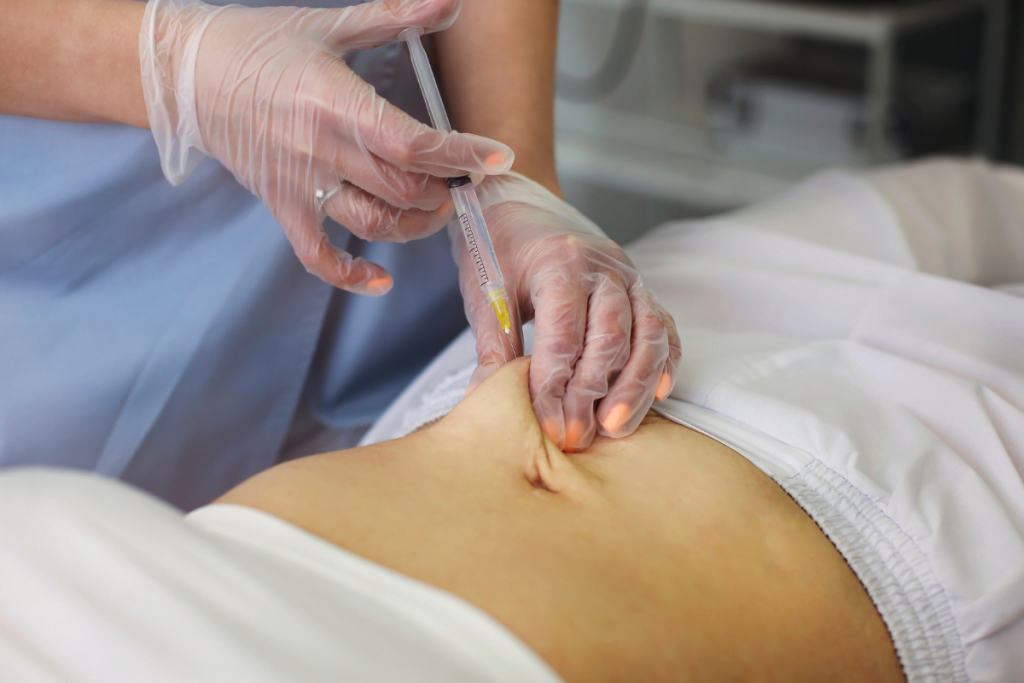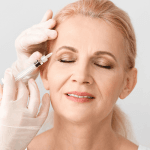Aqualyx injections are an increasingly popular treatment for targeted fat reduction, providing a non-surgical solution for contouring and reshaping areas of the body. This article explores the entire process of Aqualyx treatment, detailing the procedure, necessary preparation, and aftercare steps to ensure optimal outcome and a smooth patient recovery.
What is Aqualyx?
Aqualyx is a specially formulated injectable solution designed to target and dissolve localized fat deposits in the body.
The solution primarily consists of a substance called deoxycholate, a naturally occurring compound that helps break down body fat. When injected into specific areas, Aqualyx disrupts the fat cell membrane, enabling it to release its contents. These released fatty acids are then metabolized and eliminated by the body’s natural processes, resulting in a reduction of fat in the treated areas.
Aqualyx injections are commonly used to target areas where stubborn fat accumulates. These areas typically include the chin (double chin), thighs, abdomen, hips, and love handles.
The Procedure
Aqualyx injections involve a carefully planned process to ensure safe and effective fat reduction. Consider the following:
Consultation
During the initial consultation, assess the patient’s areas of concern and discuss their aesthetic goals, ensuring both parties have a clear understanding of the desired outcomes. Concurrently, conduct a thorough health evaluation and review of the patient’s medical history to ensure suitability for Aqualyx injections, which includes discussing current medications, allergies, and past medical procedures.
The Injection Process
How to inject Aqualyx? The targeted area is first cleaned and marked; then, the Aqualyx solution is injected using fine needles or cannulas. Massage the treated area to ensure that the solution is evenly distributed. The entire procedure usually takes about 30-60 minutes, depending on the size and number of areas being treated. Patients might feel a mild stinging or burning sensation during the injections, but it is generally well-tolerated.
To minimize discomfort and pain, a topical numbing cream or local anesthesia may be applied, with pain management options discussed during the consultation.
Number of Sessions Required
Most patients require multiple sessions to obtain optimal results. The exact number varies depending on the amount of fat and the areas being treated. Factors such as the patient’s response to the treatment, the size of the treatment area, and the desired outcome will influence the number of sessions needed. Typically, patients undergo 2-8 sessions spaced 3-4 weeks apart.
Preparation for Aqualyx Injections
Patients need to observe and maintain a healthy diet and avoid alcohol and caffeine before the procedure to lessen the risk of bruising and swelling.
Advise patients to avoid blood-thinning medications and supplements, such as aspirin, ibuprofen, and vitamin E, for at least a week before the procedure.
The treated area should be clean and free of any lotions or creams. Instruct patients to follow specific skin preparations prior to the treatment.
Aftercare and Recovery
Patients can apply ice packs to areas being treated to reduce swelling and bruising. Over-the-counter (OTC) pain relievers and medications, such as acetaminophen, can be used to manage discomfort.
Patients should avoid strenuous and hard activities, heavy lifting, and intense exercise for at least 48 hours post-treatment. Gentle walking is encouraged to promote circulation.
Follow-up appointments are also essential to monitor progress and address any concerns. Schedule these appointments based on the patient’s treatment plan.
Aqualyx Side Effects
After an Aqualyx treatment, patients may experience some common adverse reactions, which are generally mild and temporary. These can include swelling, redness, bruising, and tenderness at the injection site. These reactions are normal as part of the body’s response to the treatment and typically subside within a few days to a week.
While Aqualyx injections are generally safe, there are rare but serious risks that you and your patient should be aware of. These can include infection, allergic reactions, and significant swelling or lumps under the skin.
Advise patients to report complications early. Warning signs include severe or persistent pain, extensive swelling that does not decrease, signs of infection (such as fever, redness, and warmth at the injection site), or any unusual changes in the treated area.
Frequently Asked Questions
Where to buy Aqualyx online?
Aqualyx can be purchased through reputable suppliers like Medical Wholesale Supplies (MWS). Ensure that you buy from certified and trusted sources to guarantee the authenticity, reliability, and quality of the product.
Who are the ideal candidates for an Aqualyx treatment?
Ideal candidates for Aqualyx are those who are at or close to their ideal body weight but have persistent fat deposits that do not respond to diet and exercise. They should be in good health, with no significant medical conditions that could affect the treatment’s safety or effectiveness.
Can patients use Aqualyx with other cosmetic treatments?
Yes, patients can often combine Aqualyx with other cosmetic treatments like skin tightening procedures or fillers to enhance overall results.






